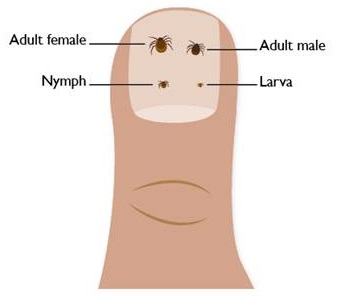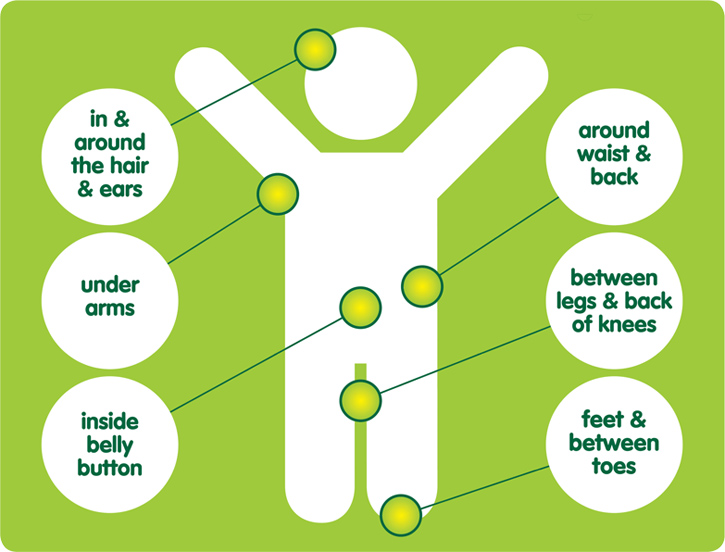Check for ticks
This page provides some helpful information on how to identify ticks and how to remove them quickly and safely.


What are ticks?
Ticks are small spider-like creatures that live in the countryside. They can be found in woodland, moorland, grassland and parks. Young ticks can be as small as a poppy seed, whilst older ticks look like a tiny spider.
As part of their life cycle, ticks feed on other animals – usually deer and sheep. Occasionally they feed on us too! Ticks are most active between March and October.
(Image © Health Protection Scotland)
Why can ticks be a problem?
Ticks can sometimes pass on disease to humans, including Lyme disease. Not all ticks carry disease. Removing ticks quickly and safely greatly reduces any risk of illness.
What should I do?
Keep enjoying the outdoors! Just carefully check for ticks after a visit to the countryside.

What do I do if I find a tick on me?
- Don't panic!
- Remove the tick as soon as possible
- The safest way to remove a tick is to use a tick removal tool, which can be bought in most outdoor shops and chemists
Keep an eye on the bite site. If a large red rash develops, or if you feel unwell, tell your doctor you've been bitten by a tick. (Note: A small, itchy spot is a normal reaction to a tick bite).
Anything else I can do?
You're less likely to pick up a tick if you:
- Keep to clearly defined paths
- Avoid dense vegetation
- Use insect repellent
Find out more
- NHS Highland have produced a short video on how to safely remove ticks.
- You can find out more about ticks and how to remove them at the Check for ticks website.
- For more information, visit the NHS Lyme Disease webpages.